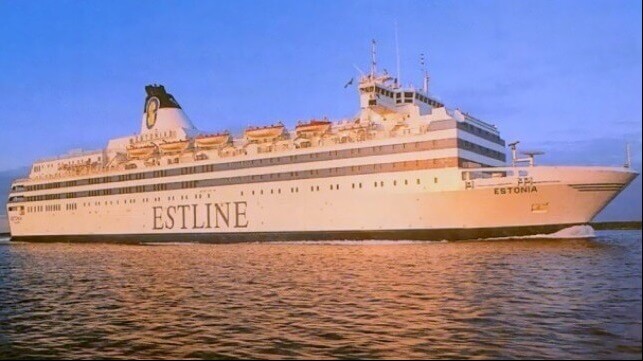European Council Strengthens RoPax Stability Regs to Align with SOLAS

The European Council adopted today, April 26, a new law that it says will improve stability requirements for the Ro-Ro passenger ships operating as ferries aligning with the previously adopted SOLAS regulations by the International Maritime Organization. According to council members, the new directive will play an important role in ensuring the safety of vessels and their passengers in the EU, in accordance with the new international standards in the field.
In considering the new standards, the EU recognizes that RoPax ships provide numerous maritime links within member states, between member states, and with countries outside the EU. The vessels were recognized for their importance to passenger and freight transport in Europe. The proposal to revise the existing stability and safety directive originated from maritime accidents, such as the sinking of the Estonia in 1994 and subsequent efforts by the maritime community to improve vessel safety.
The revised EU directive is designed to ensure, as far as possible, consistency with the applicable international standards for the stability of damaged passenger ships recently updated under SOLAS. They sought to ensure that the EU incorporates the IMO’s recently introduced model for assessing the survivability of damaged RoRo passenger ships, as well as new related requirements.
The EC has concluded that the application of the SOLAS 2020 stability requirements would result in a significant reduction in risk for ro-ro passenger ships certified to carry more than 1,350 persons, as compared with the safety level resulting from the EU’s last directive issued 20 years ago in 2003. As such the new directive incorporates the SOLAS 2020 requirements.
However, the European Council also noted that the IMO’s new international standards are not completely in line with the requirements already in force in the EU for smaller new vessels. Therefore, the new law maintains a level of safety requirements equivalent to existing EU law for those ships. The demarcation between small and large vessels is set at 1,350 passengers.
The rule aims to improve survivability in the event of a collision or other incident while providing manageable options for those vessels certified to carry less than 1,350 passengers. Those smaller RoPax ferries can elect to continue to follow the existing regulations or move for adoption of the new requirements. However, the EC is directed to reconsider the viability of this option in 2033.
In addition to moving to incorporate the SOLAS 2020 requirements, the new EC directive also aims to strengthen fleet entry requirements within the EU for existing large vessels that have not yet been certified in the EU. The directive provides an 18-month deadline for vessels to certify and also provides new rules for vessels either being chartered to operate by EU carriers or seasonally employed ferries. They will also have to certify at least one month in advance of commencing service, with the only exception being in emergency situations where the vessel is required to maintain existing service.
The new directive will be published in the EU’s Official Journal shortly and will then enter into force. Member states will have 18 months to transpose the directive into their national legislation.
